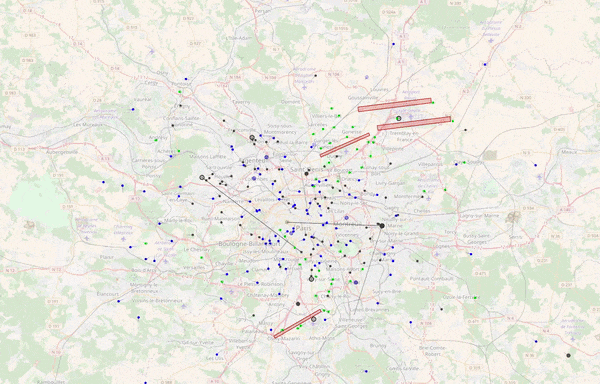Airbus A³ launches Altiscope future air traffic management initiative
Airbus’s Silicon Valley outpost, A³, has launched a new project to find a fresh approach to air traffic management (ATM), taking into account all forms of traffic, including drones and…

Airbus’s Silicon Valley outpost, A³, has launched a new project to find a fresh approach to air traffic management (ATM), taking into account all forms of traffic, including drones and air taxis.
Altiscope is a simulator built for evaluating ATM policy options and operational models that can enable all forms of airborne traffic in a wide range of geographies and jurisdictions.
With new initiatives underway for drone deliveries, autonomous air taxis and more, the number of vehicles in the air is projected to rapidly increase and current ATM systems cannot support these new levels of traffic.
In a new blog post, Karthik Balakrishnan, project executive at A³, explains: “Based in Silicon Valley, our team is already working on discrete projects with a variety of global organisations across the public and private sector on aspects like risk modelling and operational analysis.
“For example, we might evaluate how urban air mobility vehicles, cargo drones, and commercial aircraft interact in the vicinity of shipping and logistics hubs or explore rules demonstrating the safety and feasibility of utilizing UAS in rural areas for transporting medical aid. We’ll be gathering new data throughout the process so that what Altiscope can be used to accomplish evolves and expands.”
Traffic jam ahead
Using data from a variety of public and private sources, A³ estimates that by the year 2035, there will be between one and two orders of magnitude more aircraft in the sky, depending on jurisdiction, population density, geography, and economic needs. In real numbers, this means we will see several hundred vehicles ranging from delivery UAS and urban mobility, to remote sensing and high-altitude communications platforms in the skies above our cities. That’s in addition to more traditional airborne vehicles including commercial aircraft, general aviation, rotorcraft and sailplanes.
According to the FAA, there are about 5,000 aircraft in the U.S. airspace at any given time of day.
“This may seem manageable for now — but not when you consider the future UAS volume,” says Balakrishnan.
The image below shows the traffic over Paris on Sept 2 [data from FlightRadar 24].


This image shows new types of traffic over Paris in 2035, from Altiscope simulator output.

Images: Airbus A³.
A different approach
Balakrishnan says Altiscope brings a unique perspective to the table.
He says: “To start, we aren’t building an ATM system and we aren’t beholden to a specific policy, product or geography. Rather, Altiscope’s unique simulation framework is policy agnostic and globally relevant.”
He adds: “Other ATM efforts are making tremendous strides in this space, typically focused on a given set of operation and mission goals. On the other hand, we are focused on evaluating different options for the new rules of the air and aren’t specifically tied to any particular ATM architecture. We aim to create a framework that accounts for any type of aircraft operation, system, aircraft platform, geography and mission profile – without prioritizing one kind over another. Successful future airborne traffic management depends on a solution that is both flexible and scalable as yet-unimagined applications are developed and take flight.”
Balakrishnan concludes: “Plus, Altiscope is backed by Airbus and has access to the company’s international network. We are one phone call away from people working on every relevant domain to the future of air traffic management, from vehicles to operations and from safety to certification. Our efforts are complementary, but distinct given we’re rooted in Airbus’ Silicon Valley outpost, A³. We’re developing Altiscope in an open ecosystem using a small internal team to partner with the best minds around the world.”


Image: UAS mix over Bordeaux in 2035, from Altiscope simulator output [Airbus A³]
Read Balakrishnan’s full post here.
















